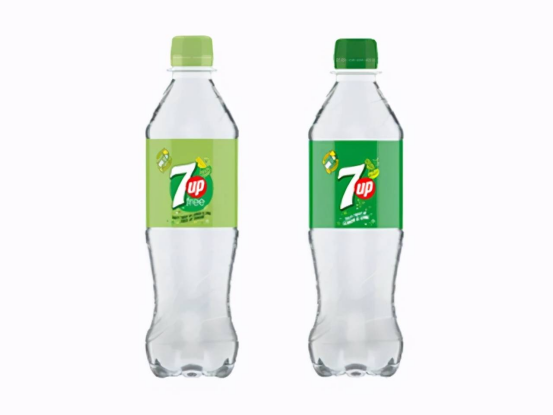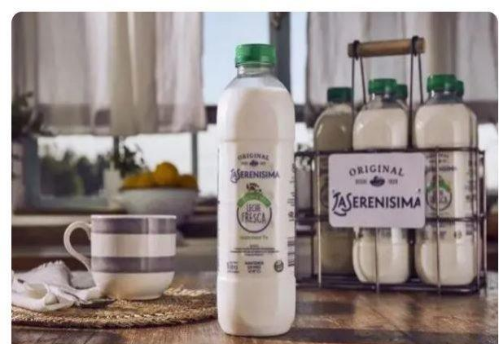How can plastic packaging be recycled? What technology trends deserve attention?
This summer, plastic packaging hit the news constantly! First, the UK's seven up green bottle was changed to transparent packaging, and then Mengniu and Dow realized the industrialization of heat shrinkable film containing PCR material. This is Mengniu's first attempt to use PCR in secondary packaging.

There is also a multinational ice cream manufacturer foneri (a joint venture between Finch and RR) who has ordered 100million Z renewable polypropylene ice cream cups. Ice cream packaged in recycled polypropylene will be sold in Italy.
The underlying logic of plastic packaging technology innovation in these different categories is the same: recyclepalagging is no longer a slogan, but a "grounded" activist. Recyclable packaging is playing an increasingly important role.
According to repot and dat, the global sustainable plastic packaging market is expected to reach $127.5 billion by 2028, with a compound annual growth rate of 6%, of which recyclable packaging accounts for the largest proportion.
How can plastic packaging be recycled? What technology trends deserve attention?
01 single material greatly improves the soft value of packaging recycling
In recent years, a single material packaging solution with good recycling value has been exposed, and has achieved the replacement of a variety of composite materials in some applications. Compared with multi-layer composite materials, single material plastic packaging does not need to be stripped after consumption, and the recyclable value is greatly improved. Whether in hard packaging or soft packaging, single materials are highly respected.
For example: demetallized full PE pump head
In daily chemical hard packaging, the traditional pump head may contain different materials, and in some cases, it may even complicate the recycling process. This kind of pump head with plastic and metal mixed structure increases the accuracy of later packaging and recycling.
Another example: all PE food flexible packaging is oxygen resistant and moisture-proof
In the field of food soft packaging, single material packaging has gradually penetrated into baby food and dairy products. For example, Garbo company provides a single material baby food packaging bag for its organic banana mango puree. Through comparison, film packaging with a single material is easier to recycle.
02 transparent PET bottle cracking color bottle recycling difficult
In the recycling of PET bottles, colored PET bottles will increase the difficulty of later recycling and reduce the recycling value, while transparent PET bottles are more convenient for recycling. In addition, transparent PET bottles are also easier to enhance the attractiveness of commodity shelves.
Therefore, transparent et bottles have become more and more popular in the past two years. Coca Cola has changed its 50 year old snow bottle from green to transparent two years ago, and seven up in the UK will also start this summer to change the 375m, 500m and 600ml FET packaging from the original edge color to transparent for later recycling. In addition to Coke Sprite and seven up transparent packaging, agenlian's dairy manufacturer mastelene HNOS will also start to use the transparent PET bottle developed by Amcor for filling its fresh milk.

03 reuse PCR and turn waste into treasure
The full name of PCR is post consumerreydedmateral, which means post consumer recycled resin in Chinese, or PCR for short. It is usually made of new plastic particles after recycling waste plastics and sorting, cleaning and road particles by the recycling system. This plastic particle has the same structure as the plastic before recycling. When the new plastic particles are mixed with the original resin, various new plastic products can be created. This way not only reduces carbon dioxide emissions, but also reduces energy consumption. PCR can be recycled materials of pet, PE, PP, HDPE, etc.
EU regulations encourage enterprises to improve PCR application
The European Union's disposable plastics Directive requires that the proportion of recycled plastic components in PE secondary material bottles should be increased to 25% from 2025. From 2030, the proportion of recycled plastic components in all plastic beverage bottles should reach 30%, PCR materials in packaging account for 30%, and the PCR materials and proportion target of Eurasia Group is 40%.
Increasing the proportion of PCR materials in packaging has become one of the key strategies for FMCG enterprises to achieve vision 2025 or vision 2030. Unilever plans to achieve 25% of PCR materials in packaging by 2025, and Mars group plans to achieve packaging by 2025. In June this year, Coca Cola continued to expand its sustainable layout in Europe and promoted the production and application of PET bottles in Italy and Germany. Previously, it has announced to gradually produce 100% pet bottles in the Netherlands, Norway, Sweden and other places.
Source: Plastic warehouse network
For more information,please contact us :
Post time: Aug-25-2022






